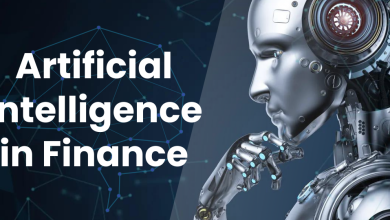
Whether your workplace is in-person, hybrid, or remote, challenges in the employee-employer dynamic persist.
On the employer side, these challenges can include knowing:
- What work is happening and how long it takes
- How valuable or profitable work is to your company
- When employee burnout is looming
On the employee side, achieving a work-life balance while fulfilling an employer’s expectations, especially in a service-based industry, is an ongoing challenge (although I will argue, as Head of Operations at a fully-remote marketing agency, that remote set-ups offer more flexibility for achieving that balance).
My guess is that most people wouldn’t think of AI as a solution for interpersonal challenges, but in leading an initiative to build an AI-driven app for time planning and time tracking, I’ve learned about its potential to make business-level decisions to help the bottom line, improve the employee-employer dynamic, and boost employee morale and retention along the way.
How does this work? Let’s take a look.
1. How time tracking can help
Along with the straightforward benefits of gauging employee work hours, using AI-powered reporting with time-tracking software can unlock powerful new insights that you may have never considered. By having employees categorize work by clients or projects, leadership teams can identify high-level trends and opportunities for improvement. One key metric employers can track is whether the team is spending a disproportionate amount of time on any particular clients – and eroding profit margins in the process.
AI tools that can give you answers to questions like “How many hours did my team spend on {Client} last month?” and “Based on client revenue and employee hours worked, what’s the profit margin on {Client}?” will help employers understand very quickly whether clients are getting too much attention or not enough attention. Clients in the former category are often a drain on employee morale, and using data to revisit the client’s expectations can help remove some of the load from your employees.
Granted, management at service-based companies requires knowing that a client’s needs ebb and flow with things like seasonality and that load balance isn’t linear. Seeing the data in black and white can help identify trouble areas and course correct before they take an irreversible toll. You can also use this data to be proactive; with enough historical data, it becomes easy to set goal hours for employees by client or project to give them more guidance and confidence that they are spending their work week in the most valuable way.
2. How AI visualizations can create smoother workdays
Staying on top of deadlines and prioritizing tasks strategically are common struggles for many employees, especially for those in fast-moving client work. This creates constant stress for both employees and employers.
Utilizing tools to centralize and visualize everything on your plate is hugely beneficial in empowering employees to take ownership of their week. It allows employees to plan out a more strategic calendar, with high-priority tasks moved up and less urgent items flexible to move down or later in the week.
The transparency also saves managers time by being able to see what’s planned at a quick glance and help employees prioritize as needed, with less time wasted asking “Do you have that task I asked you about on your plate for this week?”
McKinsey’s recent research reinforces this, finding that companies integrating AI into everyday workflows report not only significant efficiency gains but also the ability to redirect employee energy toward higher-value, human-centered work.
Over time, this will help employees build healthier habits and ease the friction between employees and management.
3. Data → Awareness → Empathy → Retention
Often, excessive workloads quietly go unnoticed. Having tools to monitor and alert when employees might be overwhelmed and heading toward burnout can help managers proactively prioritize and redistribute workload. In some situations, no amount of AI-powered data or insights will help ease workload. But even in those situations, the more informed a manager is about an employee’s potential challenges, the more productive and empathetic conversations the two sides can have.
Employees who feel heard – particularly if the employer can back up empathy with something like a bonus PTO day to be cashed in later – are much more likely to stick around than employees whose heavy workloads aren’t acknowledged. According to a recent report from Businessolver, companies perceived as unempathetic risk an estimated $180 billion from attrition.
Wrapping up
More AI tools to improve employer-employee relationships are coming. Rather than view AI as a cold, robotic threat to the workforce as we know it, I recommend embracing its potential to address the root causes of interpersonal challenges that predate the information age.




